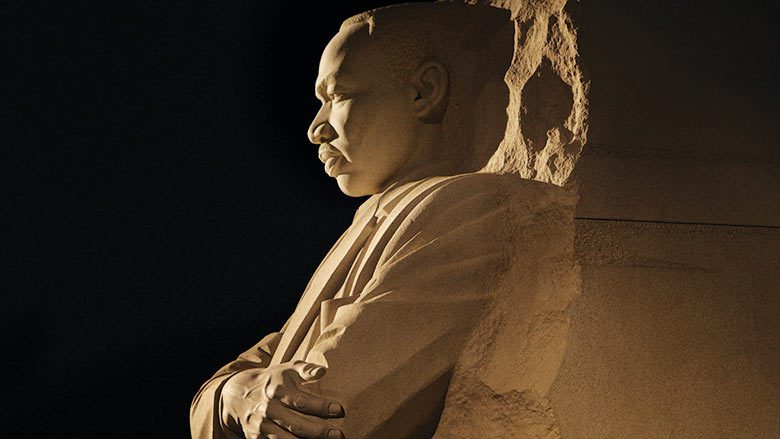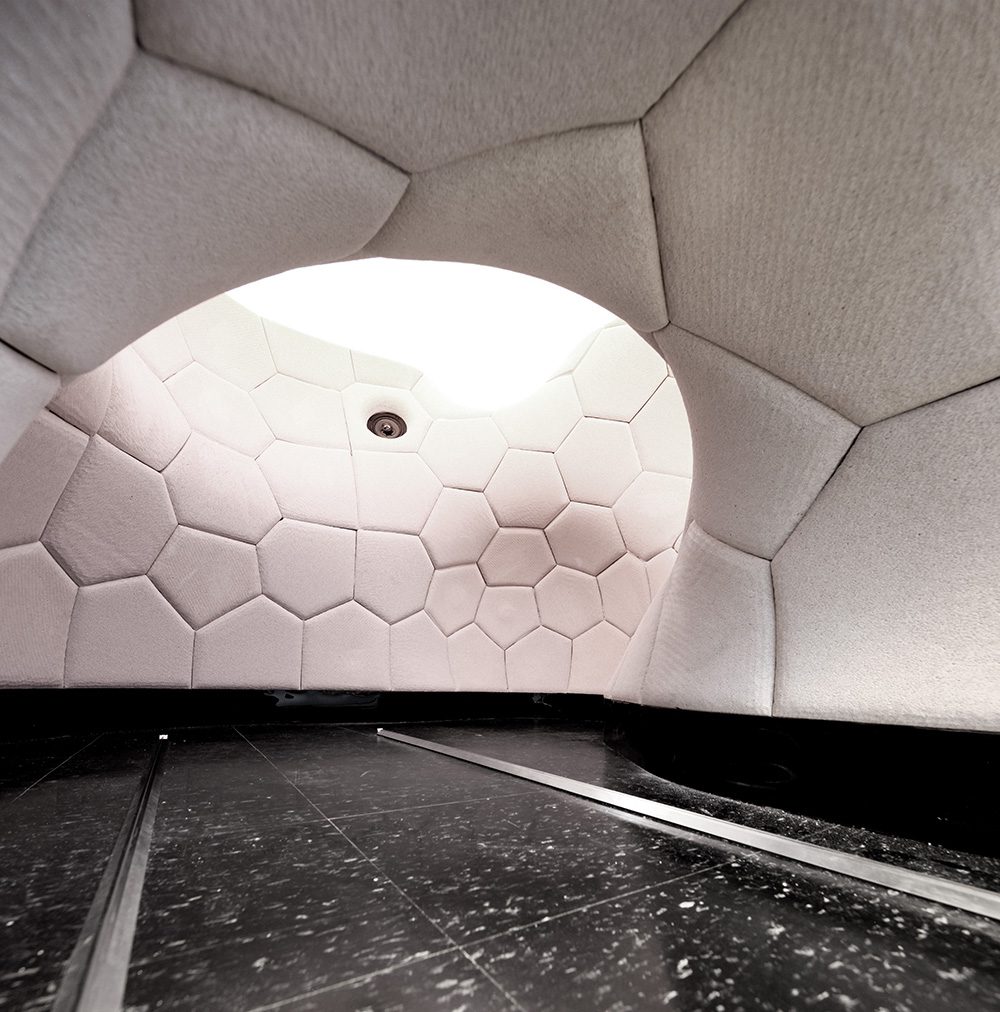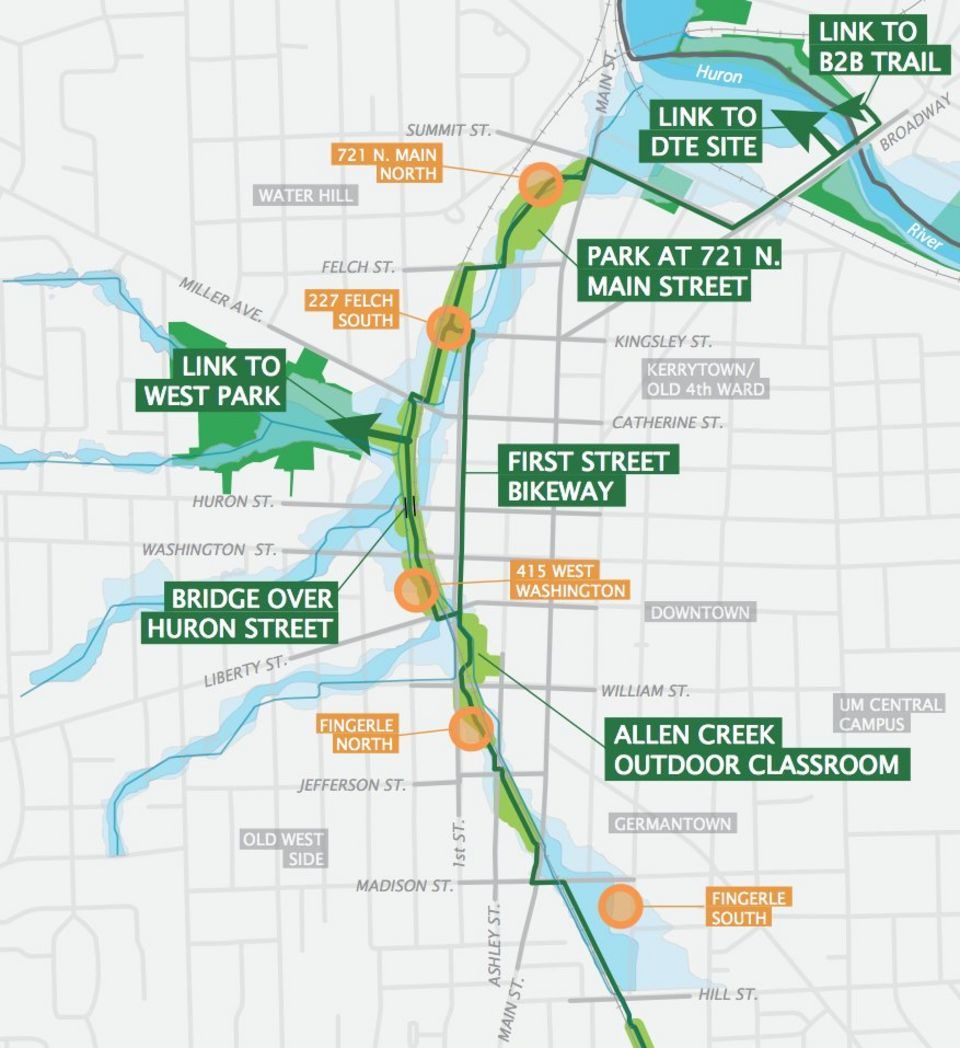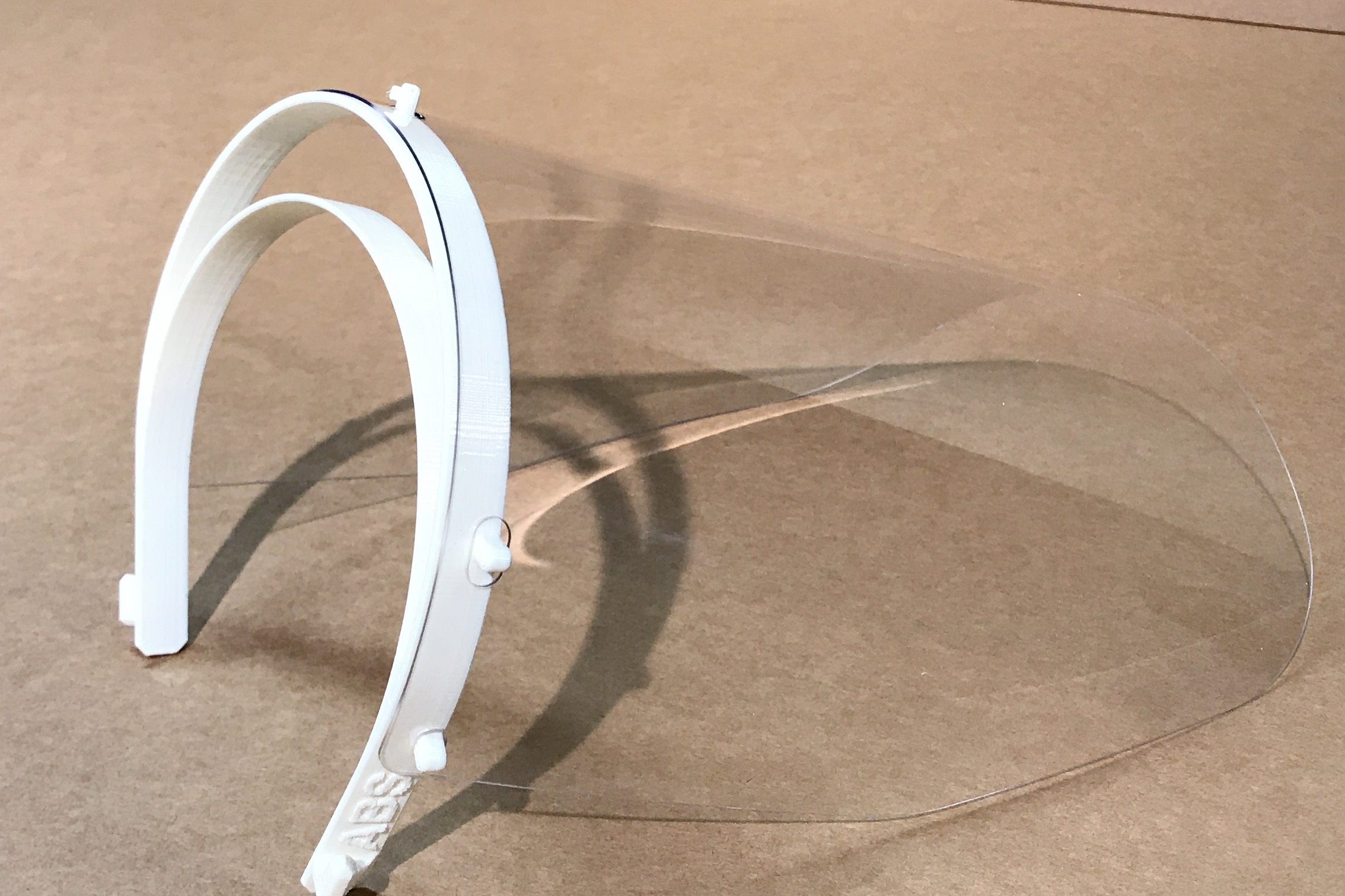
UPDATE: As of April 23, 2020, FABLab staff collected, produced, assembled and delivered approximately 1,300 face shields, representing a substantial portion of the total number delivered from the local community to the University of Michigan PPE dropoff.
Just weeks before the end of the semester, Taubman College’s fabrication lab (FABLab) is usually very busy. Students’ personal 3D printers are humming making architectural models. But this spring, instead of printing the finishing touches on semester-long projects, this technology is helping keep medical professionals safe.
Since April 1, FABLab staff have made and collected donations of 3D-printed bands as part of an effort to produce face shields — based on open-source designs approved by the National Institutes for Health — for use by Michigan Medicine staff fighting on the frontlines against COVID-19 in southeast Michigan. Collaborators producing the bands offsite have been dropping them off at a station set up at Taubman College. The FABLab prepares the prints for assembly and also cuts the shields (the transparent protective face cover) using the college’s ZUND knife cutter. Stratasys, the company that made the FABLab’s 3D printers, donated material to support the effort.
To date, the FABLab has delivered more than 500 finished face shields for use by Michigan Medicine staff — and is poised to deliver around 300 more in the next week.
FABLab staff clean and label the 3D-printed bands, cut the appropriate shield (they’ve been producing both three-hole and five-hole shields), assemble the finished product, and then package and deliver it to Michigan Medicine, the University of Michigan hospital just over a mile down the road.
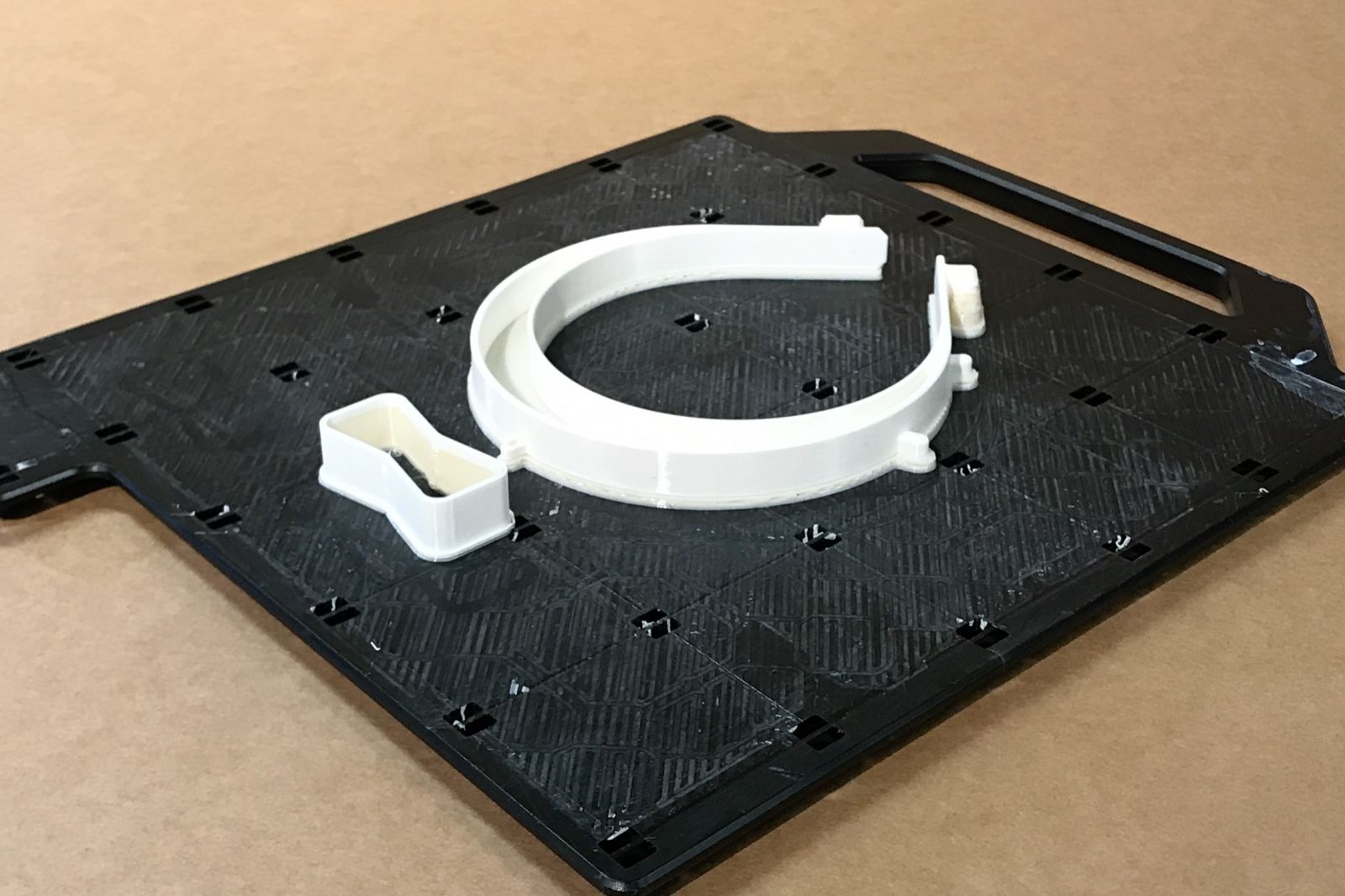
One of the first tests the FABLab performed for the face shield head band, using white ABS plastic.
As soon as confirmed cases of COVID-19 began appearing in the state of Michigan in early March, faculty and students began inquiring about how to support efforts to produce personal protective equipment (PPE) for local healthcare providers. Taubman College leadership has been coordinating within a centralized U-M effort that includes Michigan Medicine, the College of Engineering, the UM3D Lab, the Office of Technology Transfer, and the Office of Research.
The FABLab is set up to produce about 50 face shields per day and process 50 to 100 donations a day on average. As safety during the pandemic is critical, staff are monitoring the printers remotely and only utilizing one onsite staff member per day.
“It has been an incredible team effort,” said Wes McGee, director of the FABLab and associate professor of architecture, who notes that the college also is coordinating with local efforts like Operation Face Shield, an Ann Arbor Facebook group with hundreds of members producing several hundred shields a day. “[The Office of Technology Transfer] is actively deploying resources to engage regional manufacturing to scale outputs by 100 times, so our main goal is to fill the immediate needs,” McGee added.
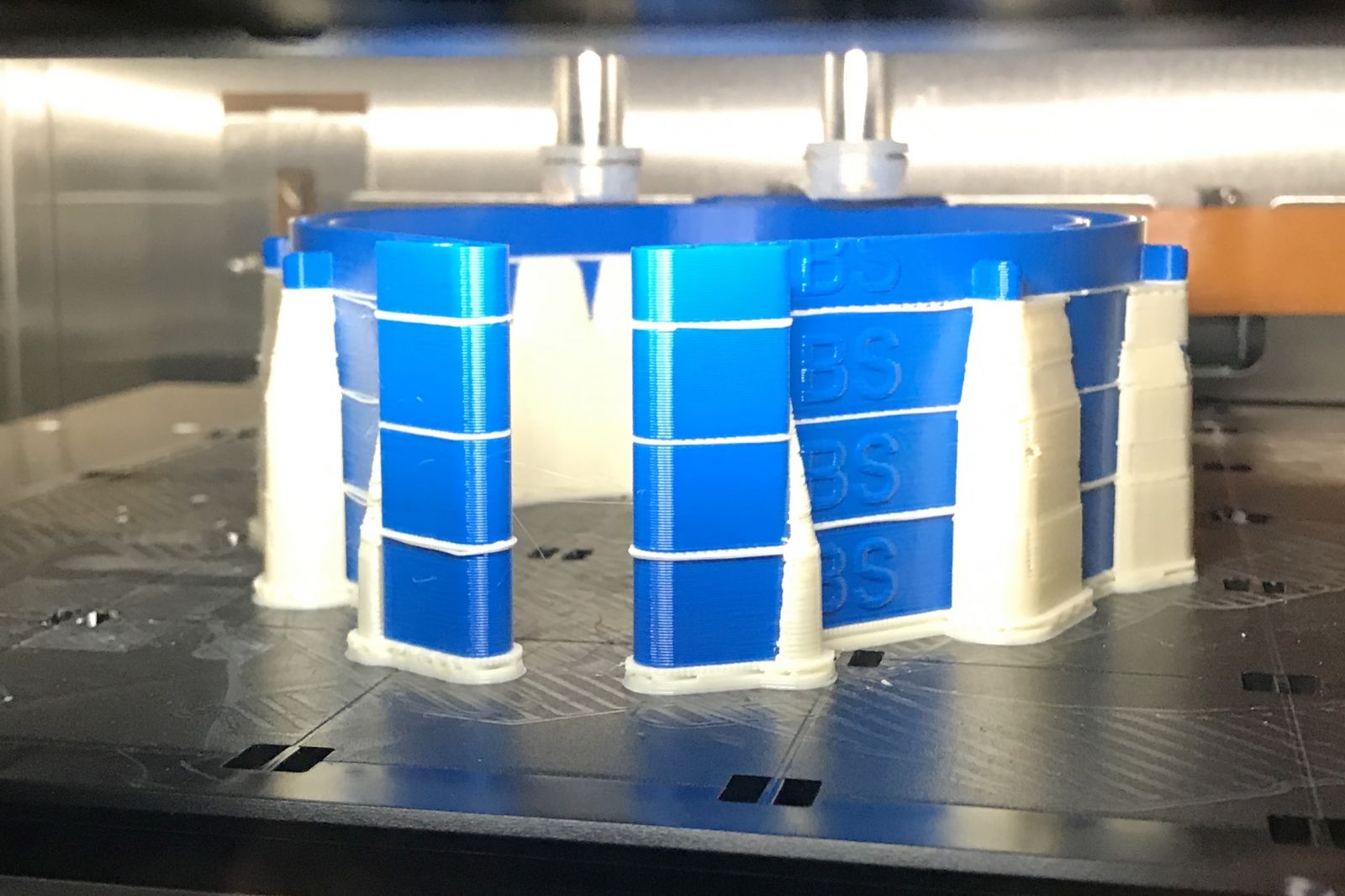
The most recent version of the head band, photographed mid-print in the FABLab’s Stratasys F170 3D printer. Stratasys donated the blue material (ABS plastic) for the purpose of producing PPE.
For Ben Lawson, a dual-degree student in the Master of Architecture and M.S. in Digital and Material Technologies programs, McGee’s call for the Taubman College community to join the production effort has served a dual purpose. “It feels really good to help, and at the same time, it’s a stress-reliever because we’re actually able to do something,” said Lawson, who with his girlfriend, Ellison Turpin (an architecture student at the University of Pennsylvania), has produced 65 bands on the two 3D printers in their apartment. Knowing they had the materials and technology, the duo had been itching to help but unsure of how to do so — so McGee’s call to action was welcome news. “We are so glad the FABLab has been coordinating this effort,” Lawson said. “It’s great to see everybody come together, using resources we already had access to, to make a difference.”
Taubman College alumni also are assisting with the local effort, including Adam Smith, M.Arch ’11, and Lisa Sauvé, M.Arch ’11, M.S. ’14, the principals of Ann Arbor-based Synecdoche Design Studio. The team has been using its studio’s resources — 3D printer and raw materials — to produce PPE materials, and then bringing them to the FABLab for final assembly and delivery. Smith and Sauvé started producing the gear independently when Michigan Medicine put out a call for assistance.
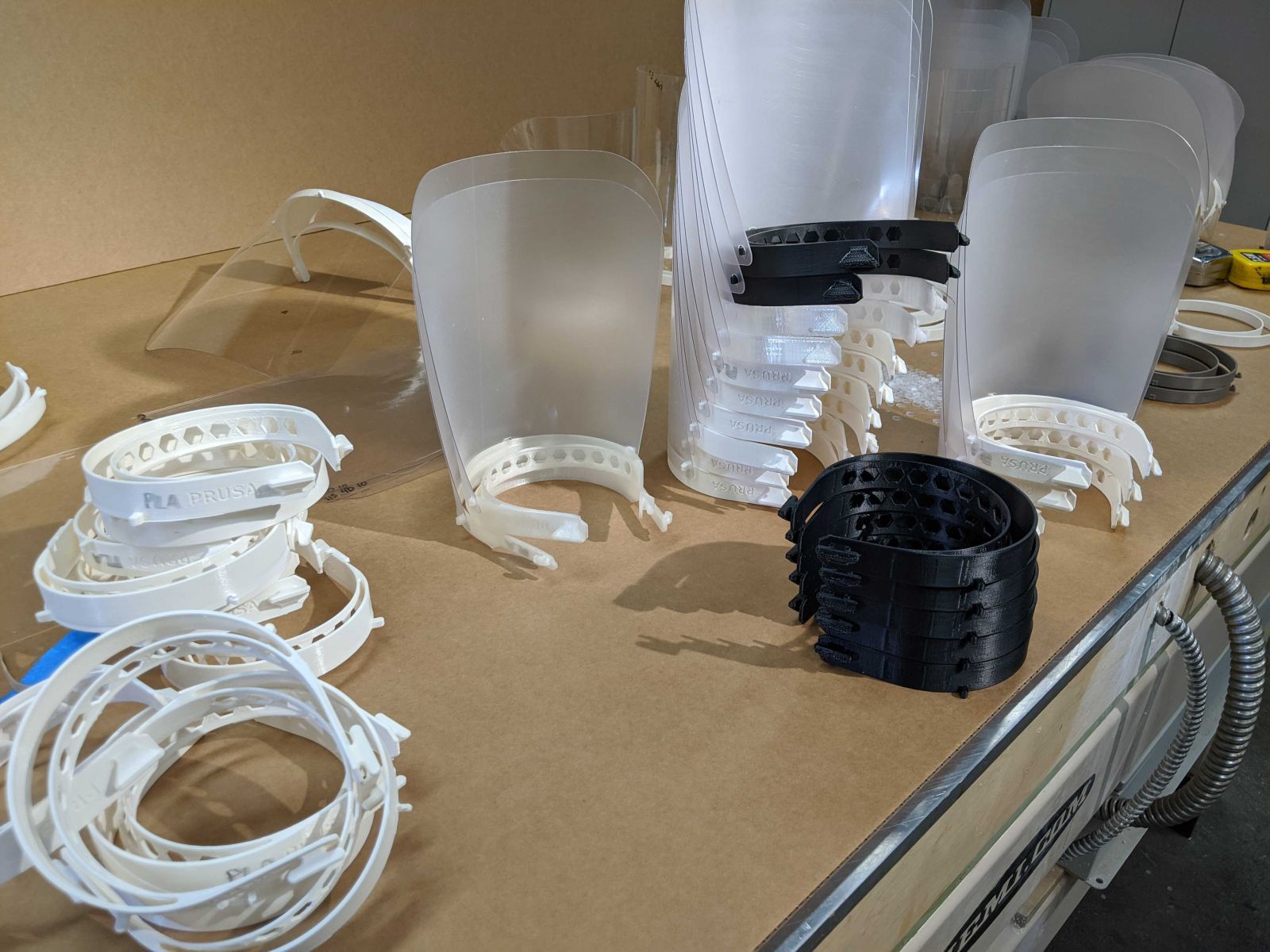
The first round of assembly with the first version of the shields, using PETG for the clear face shield and bands made in the FABLab and by faculty, staff, alumni, and students offsite.
“Once we knew about the coordinated efforts from Taubman, it made sense for us to merge the collective efforts for more consistent products for the Michigan Medicine team to use,” said Sauvé, who credits Smith with “kickstarting this in our studio and keeping the 3D printer running constantly to produce as many face shields as possible.”
Getting involved in the effort was a no-brainer, Sauvé said. “We are doing a very small part, but it aligns with our values of Do Good Work — so this mostly means that we are doing what we would do normally by using our skills and design to contribute to our community.”





